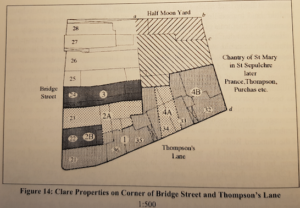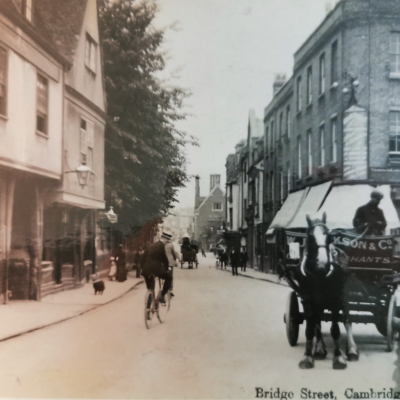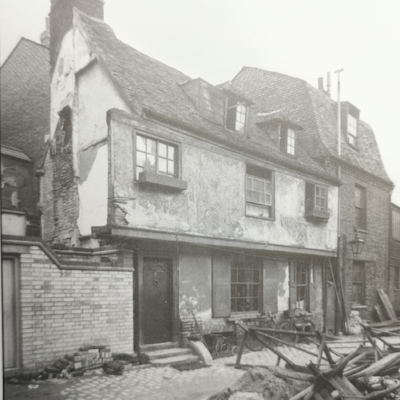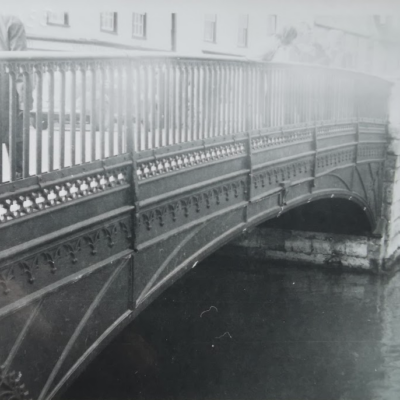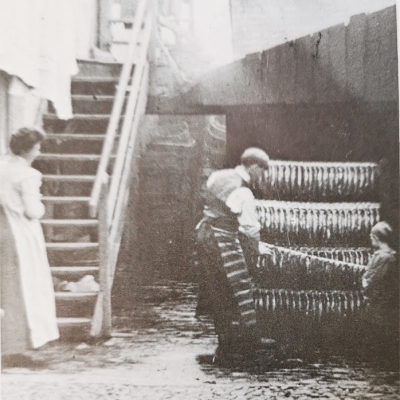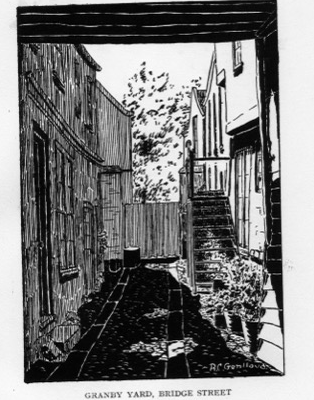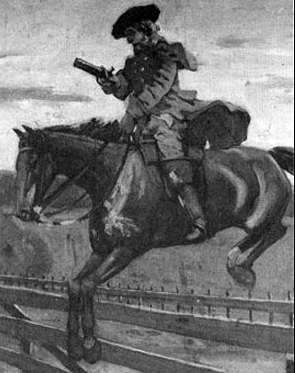Search by topic
- archaeology
- Building of Local Interest
- charity
- church
- crime
- dressmaker
- fire
- Great Eastern Railway
- Listed building
- Mapping Relief
- medieval
- oral history
- poverty
- Public House
- Rattee & Kett
- Religious House
- Roman
- scholar
- school
- Then and Now
- tudor
- women
- work
- world war one
- world war two
Search by text
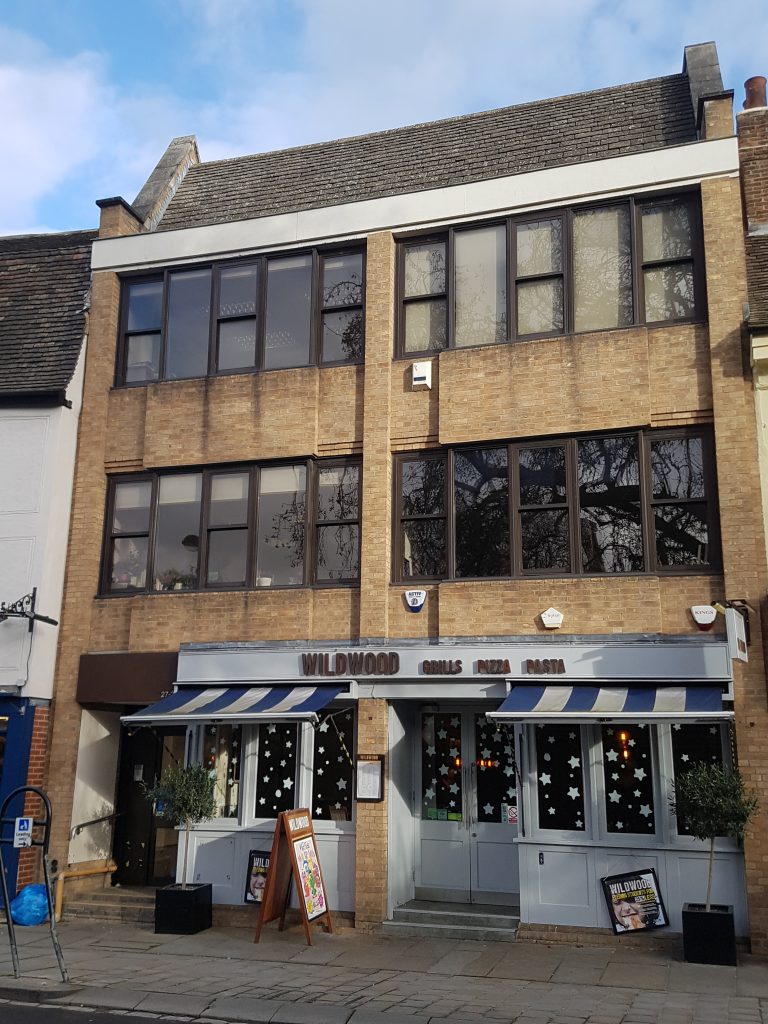
28 Bridge Street, the Greyhound, the Griffin
History of 28 Bridge Street
1959 Royal Commission on Historical Monuments Survey of Cambridge: no evidence remains to suggest that the building is earlier that the late 18th or early 19th cent date of the mansard roofs. Inside , in one of the upper rooms, is an early 19th cent. cast-iron grate of elaborate design.
Early history about the property can by found in T E Faber, An Intimate History of St Clement’s, 2006.
1547 ‘John Richardson bayliff’ living at no. 28. In his will of 1549 he says that ‘my howse called the Greyhound in Clement parish’ suggesting it was in use as an inn.
1567 William Lyne I, son of John Lyne, owns not only no. 27 the Griffin, but also no. 28.
1590 no. 27 sold by Lyne family to Lambert Dampes. Business and name of the Griffin at no. 27 transferred to no.28.
1602 leased by Widow Simpson
1623 leased by Andrew Boardman
1662-4 home of Thomas Sowersby. He was a prosperous corn merchant but had been an inn-keeper as a young man. He rented the Anchor from the Tabors and paid Hearth Tax for the Crow or the Peacock.
1699 death of Christopher Greene the Elder. He left a freehold inn by the name of the Griffin to his grandson Christopher Russell.
19th cent: home of Joseph Lawrence and family. Two of Jospeh’s daughters were teachers and they ran a ‘ladies school; in the house. Until 1887 it was the business address of Joseph Lawrence and Sons, seedsmen who diversified into coke, coal and Portland cement.
1861
Joseph Lawrence, 63, corn and coal merchant, b Cambridge
1913
Skeels Bros, cycle makers
Herbert D Roff, lodging house keeper
1962 –
Contribute
Do you have any information about the people or places in this article? If so, then please let us know using the Contact page or by emailing capturingcambridge@
License
This work is licensed under CC BY-NC-SA 4.0





